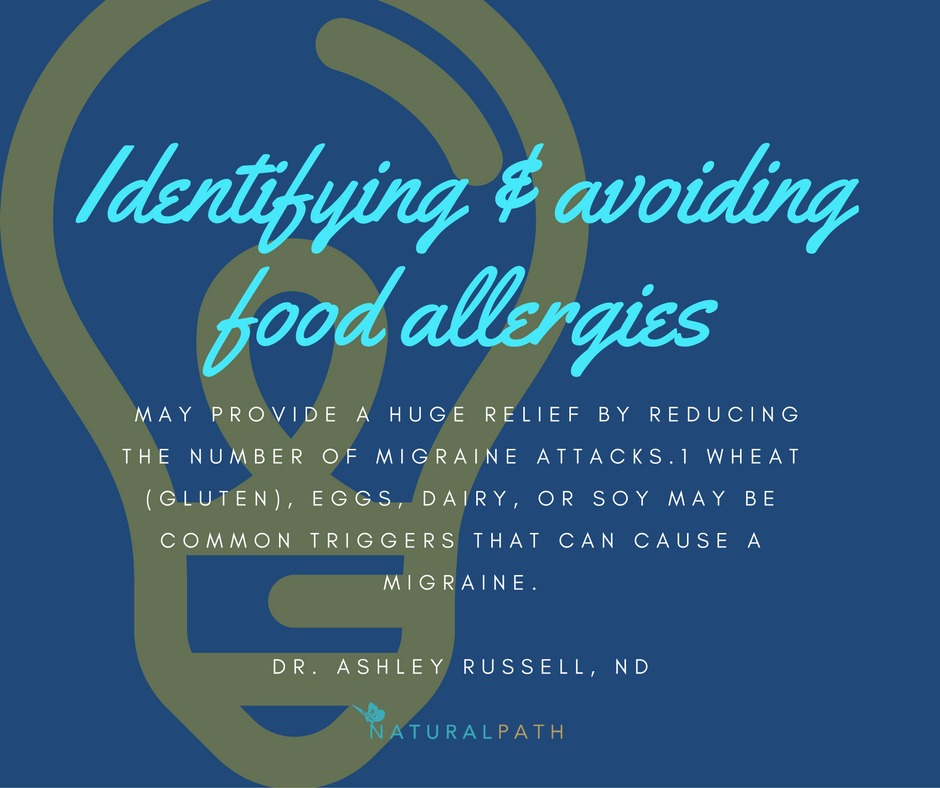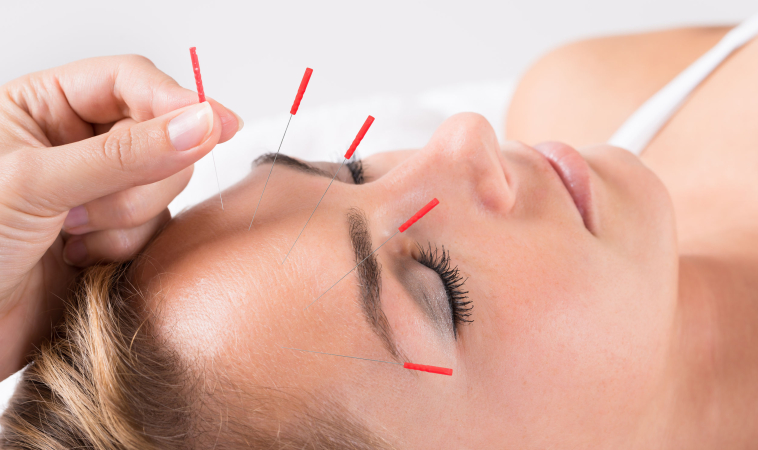 Now that we’ve covered the conventional treatments, these last two articles will highlight the prophylactic (preventative) and acute naturopathic treatments. Since an ounce of prevention is worth a pound of cure, we’ll start by discussing natural ways to prevent migraines. Keep in mind, that while some treatments may overlap between preventative and acute treatment, prevention is only useful for treating migraines if you know the underlying cause of the disease. As I discussed earlier, this can make preventing migraines tricky since the cause is essentially unknown and probably multi-faceted for most migraine sufferers. For these reasons, the treatments available are numerous and go well beyond the scope of this series, so for convenience, I’ll focus on the most common treatments that I have seen clinically and/or ones that research has shown to be effective.
Now that we’ve covered the conventional treatments, these last two articles will highlight the prophylactic (preventative) and acute naturopathic treatments. Since an ounce of prevention is worth a pound of cure, we’ll start by discussing natural ways to prevent migraines. Keep in mind, that while some treatments may overlap between preventative and acute treatment, prevention is only useful for treating migraines if you know the underlying cause of the disease. As I discussed earlier, this can make preventing migraines tricky since the cause is essentially unknown and probably multi-faceted for most migraine sufferers. For these reasons, the treatments available are numerous and go well beyond the scope of this series, so for convenience, I’ll focus on the most common treatments that I have seen clinically and/or ones that research has shown to be effective.
Nutrition
A great place to start when trying to prevent migraines involves nutrition as it is a key factor for many chronic diseases. When it comes to nutrition and migraines, there are a few different approaches that have been beneficial for different people. For some, identifying and avoiding food allergies may provide a huge relief by reducing the number of migraine attacks.1 Wheat (gluten), eggs, dairy, or soy may be common triggers that can cause a migraine. Other types of foods that migraine sufferers can react to can include tyramines (aged cheeses and wine), MSG (flavor additive, also found naturally in some foods in small amounts), sulfites (dried fruits and red wine) nitrites (preservative in processed meats), aspartame (artificial sweetener), or histamine (fermented and cured foods, older/more ripe foods).2 Not to mention, there is a growing body of research supporting the link between digestive disorders, the gut microbiome, and migraines.3
Along the same vein as nutrition are nutritional supplements. Whether it’s due to an individual’s biochemistry or nutritional habits and needs, supplementing with magnesium, vitamin B12, riboflavin (vitamin B2) and coenzyme Q10 (CoQ10) may provide some much needed relief.4,5 Beyond vitamins and minerals, a more recent study found using 3mg of melatonin to be as effective and better tolerated than amitriptylline for migraine prevention.6 While the mechanism behind the efficacy of melatonin is unknown, it is interesting to note that migraine sufferers tend to commonly suffer from insomnia as well and disrupted sleep patterns (getting too much or too little sleep) can even be a trigger.
Herbal Medicine
Feverfew (Tanacetum parthenium) and butterbur (Petasites hybridus) are herbs with a long-standing history of use for migraine prevention.7Feverfew has a strong anti-inflammatory effect and may even supply some melatonin. The only downside is that it can take months of daily use before the health benefits are seen. A few fresh leaves can be eaten daily for this benefit. While feverfew is a generally safe herb, some people are sensitive to plants in this same family (Asteraceae, which includes Chamomile) so use it cautiously to start.
Lifestyle management
Stress, or rather, the mismanagement of stress, can be a common cause of migraines. Stress management tools and techniques would require another series of articles but include counseling, meditation, daily gratitude practices, healthy nutrition, and healthy sleep. For most Americans, stress is a large component of chronic disease in general, so finding and implementing stress management tools that work for you can be life-changing, beyond just reducing migraines. And even exercising just a few times a week can have profound effects on reducing the number of migraines. 8
Other Specialized Treatments
Acupuncture has been in existence for thousands of years and there’s a reason it’s stuck around for so long. There is a growing body of research supporting the benefits of acupuncture treatments for chronic pain, including migraines.9 Homeopathy, a distinct system of medicine that falls under the naturopathic umbrella, can also be an effective treatment for prophylaxis.10 While finding a remedy for migraine prevention does require a skilled homeopathic practitioner, such as a naturopathic physician, specific homeopathic remedies for acute treatments of migraines will be discussed in the next article. Chiropractic manipulations have also been found to help decrease the occurrence of migraines.11 And a relatively newer treatment that has been shown to prevent migraines is biofeedback.12 Biofeedback is a technique involving a machine in which people are trained to use signals from their own bodies to improve their health.
Hopefully this has introduced some new treatment ideas that you haven’t tried yet or given you a new perspective on ones you’ve tried in the past. Since migraines are most likely a multifactorial disease, the best way to start reducing your migraines is to try one prophylactic treatment or approach at a time. While this list may seem overwhelming, taking it one step at a time may guide you towards the next step on your migraine-free health journey.
 Dr. Ashley L. Russell graduated from the Southwest College of Naturopathic Medicine in Arizona where she received training as a primary care physician. She received her B.S. in Applied Ecology from the University of California, Irvine. She is a naturopathic doctor at Serenity Natural Health Center in Frederick, Maryland, with a focus on young women’s health and is also co-founder of LovempoweR, an organization dedicated to changing women’s health care. Dr. Russell is passionate about helping women reclaim their menstrual cycle by alleviating all kinds of menstrual issues including PCOS, infertility, endometriosis, PMS, and painful or irregular periods. In her spare time, Dr. Russell enjoys baking vegan, gluten-free treats, hiking, and spending time with her dog, Honey.
Dr. Ashley L. Russell graduated from the Southwest College of Naturopathic Medicine in Arizona where she received training as a primary care physician. She received her B.S. in Applied Ecology from the University of California, Irvine. She is a naturopathic doctor at Serenity Natural Health Center in Frederick, Maryland, with a focus on young women’s health and is also co-founder of LovempoweR, an organization dedicated to changing women’s health care. Dr. Russell is passionate about helping women reclaim their menstrual cycle by alleviating all kinds of menstrual issues including PCOS, infertility, endometriosis, PMS, and painful or irregular periods. In her spare time, Dr. Russell enjoys baking vegan, gluten-free treats, hiking, and spending time with her dog, Honey.
References:
- Ross SM. Clinical applications of integrative therapies for prevention and treatment of migraine headaches. Holist Nurs Pract. 2011;25(1):49–52.
- Taylor FR. Lifestyle changes, dietary restrictions, and nutraceuticals in migraine prevention. Tech Reg Anesth Pain Manag. 2009;13(1):28-37.
- Cámara-Lemarroy, Carlos R et al. “Gastrointestinal Disorders Associated with Migraine: A Comprehensive Review.” World Journal of Gastroenterology 22.36 (2016): 8149–8160. PMC. Web. 27 Oct. 2016.
- Bianchi A, Salomone S, Caraci F, et al. Role of Magnesium, Coenzyme Q10, Riboflavin, and Vitamin B12 in Migraine Prophylaxis. Vitam Horm. 2004;69:297-312.
- Markley HG. CoEnzyme Q10 and riboflavin: the mitochondrial connection. Headache. 2012;52 Suppl 2:81-7.
- Gonçalves AL, et al. Randomised clinical trial comparing melatonin 3 mg, amitriptyline 25 mg and placebo for migraine prevention. J Neurol Neurosurg Psychiatry. 2016 Oct;87(10):1127-32.
- Vogler BK, Pittler MH, Ernst E. Feverfew as a preventative treatment for migraine: a systematic review. Cephalalgia. 1998;18(10):704-708.
- Varkey E, et al. Exercise as migraine prophylaxis: a randomized study using relaxation and topiramate as controls. Cephalalgia. 2011 Oct;31(14):1428-38.
- Linde K, Allais G, Brinkhaus B, et al. Acupuncture for migraine prophylaxis. Cochrane Database Syst Rev. 2009(1):CD001218.
- Straumsheim P, Borchgrevink C, Mowinckel P, et al. Homeopathic treatment of migraine: A double blind, placebo controlled trial of 68 patients. Br Homoeopath J. 2000;89(1):4-7.
- Bronfort G, Assendelft WJ, Evans R, et al. Efficacy of spinal manipulation for chronic headache: a systematic review. J Manipulative Physiol Ther. 2001;24(7):457-466.
- Nestoriuc Y, et al. Biofeedback Treatment for Headache Disorders: A Comprehensive Efficacy Review. Applied Psychophysiology and Biofeedback. September 2008, Volume 33, Issue 3, pp 125–140
















